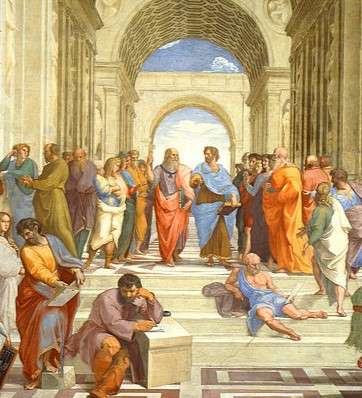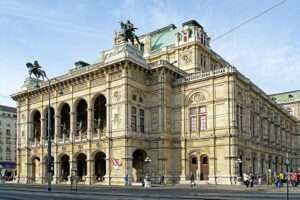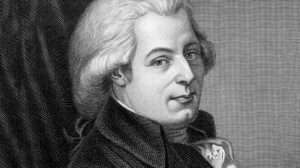The Modern Era, also known as the Modern Age or Modern Period, is a significant phase in human history that follows the Middle Ages. This era is generally considered to have begun around 1500 AD and extends to the present day. The transition from the Middle Ages to the Modern Era marked a profound shift in various aspects of human civilization, including science, politics, culture, and economics.
The end of the Middle Ages was characterized by a series of events and changes that paved the way for the Modern Era. These included the Renaissance, a period of renewed interest in classical learning and values, and the Age of Discovery, which saw explorers from Europe traverse the globe, leading to a new understanding of the world’s geography and the establishment of new trade routes.
Characteristics of the Modern Era
The Modern Era is marked by a number of defining characteristics that set it apart from previous periods in history. These include the rise of nation-states, the growth of science and technology, the spread of democracy and human rights, and the development of global trade and communication.
One of the most significant developments of the Modern Era was the Enlightenment. This intellectual and philosophical movement, which emerged in the 17th and 18th centuries, emphasized reason, analysis, and individualism over traditional doctrine. The Enlightenment had a profound impact on many aspects of society, including politics, science, and culture. It led to the development of modern democratic governments and the scientific method, and it challenged traditional religious beliefs.
Another key characteristic of the Modern Era is the rise of modernism. This cultural movement, which began in the late 19th century, rejected traditional forms and embraced new, experimental techniques in art, literature, and architecture. Modernism reflected the rapid changes in society and technology during the Modern Era, and it continues to influence contemporary culture and thought.
Timeline of the Modern Era
The Modern Era is marked by a series of significant events that have shaped the course of human history.
From 1500 to 1945, the world witnessed a number of transformative events. The Renaissance, the Age of Discovery, the Industrial Revolution, and the two World Wars all took place during this period. These events brought about significant changes in society, politics, and technology, setting the stage for the world as we know it today.
The post-war history and the modern era from 1945 to 1979 was a period of reconstruction, decolonization, and the beginning of the Cold War. This era saw the establishment of the United Nations, the rise of the United States and the Soviet Union as superpowers, and the proliferation of nuclear weapons. It was also a time of significant social and cultural change, with the Civil Rights Movement, the feminist movement, and the counterculture of the 1960s. You can read more about the Cold War here.
The modern era from 1980 to the present has been marked by the end of the Cold War, the rise of globalization, and the advent of the digital age. This period has seen the fall of the Berlin Wall, the spread of the internet, and the increasing importance of climate change and sustainability.
Cultural Shifts in the Modern Era
The Modern Era has also been characterized by significant cultural shifts.
Changes in art, literature, and fashion have reflected the evolving societal values and technological advancements of the time. The rise of modernism and postmodernism, the development of new literary genres, and the evolution of fashion trends have all been part of this cultural transformation.
The impact of the religious wars was another major cultural shift. The wars of religion in the 16th and 17th centuries, including the Protestant Reformation and the Catholic Counter-Reformation, led to a rethinking of religious beliefs and practices. This period of religious conflict and change paved the way for the Enlightenment, which championed reason and individualism over traditional religious doctrine. You can learn more about the Enlightenment here.
The Modern Era in the USA
The Modern Era in the USA is marked by several significant events and transformations.
The election of Ronald Reagan in 1980 marked a shift in American politics, with a move towards conservative policies and a focus on free-market capitalism. Reagan’s presidency also coincided with the end of the Cold War, a period of geopolitical tension between the United States and the Soviet Union. The end of the Cold War in 1991 marked a significant turning point in global politics, with the United States emerging as the world’s sole superpower. You can read more about the Cold War here.
The end of the Cold War also marked the emergence of a new, global era. This period has been characterized by increased globalization, the spread of the internet, and the rise of new economic and political challenges, such as climate change and terrorism.
Styles of the Modern Era
The Modern Era also saw significant changes in architectural and design trends.
From 1930 through the 1970s, the world witnessed the rise of modernist architecture. This style was characterized by a rejection of ornamentation, a focus on function, and the use of new materials and technologies. Modernist architects sought to create buildings that reflected the spirit of the modern age.
Alongside modernist architecture, the Modern Era also saw the development of new design trends. These included the Bauhaus style, which combined fine art with crafts and technology, and the International Style, which emphasized volume over mass, balance over symmetry, and the use of new materials and technologies. You can learn more about Modern Architecture here.
The Modern Era in Publishing
The Modern Era brought about significant changes in the field of publishing, particularly in newspaper production and mass communication.
Following World War II, there were radical transformations in the way newspapers were produced. The advent of new technologies, such as the telegraph, the typewriter, and later the computer, revolutionized the process of news gathering and dissemination. The post-war period also saw the rise of television and radio, which brought about a new era of mass communication.
These changes in mass communication have had profound effects on society, influencing public opinion, shaping political landscapes, and changing the way people interact with the world. The digital revolution in the late 20th century further transformed the publishing industry, with the rise of online news platforms and social media.
FAQs
What is considered the Modern Era?
The Modern Era is a period in human history that follows the Middle Ages. It is generally considered to have begun around 1500 AD and extends to the present day.
What happened in the Modern Era?
The Modern Era is marked by significant events and transformations, including the Renaissance, the Age of Discovery, the Industrial Revolution, the two World Wars, the end of the Cold War, and the rise of globalization and the digital age.
When did the Modern Era start?
The Modern Era is generally considered to have started around 1500 AD, following the end of the Middle Ages.
What is the Modern Era in the USA?
The Modern Era in the USA is marked by several significant events, including the election of Ronald Reagan, the end of the Cold War, and the emergence of a new, global era. You can read more about the Cold War here.



